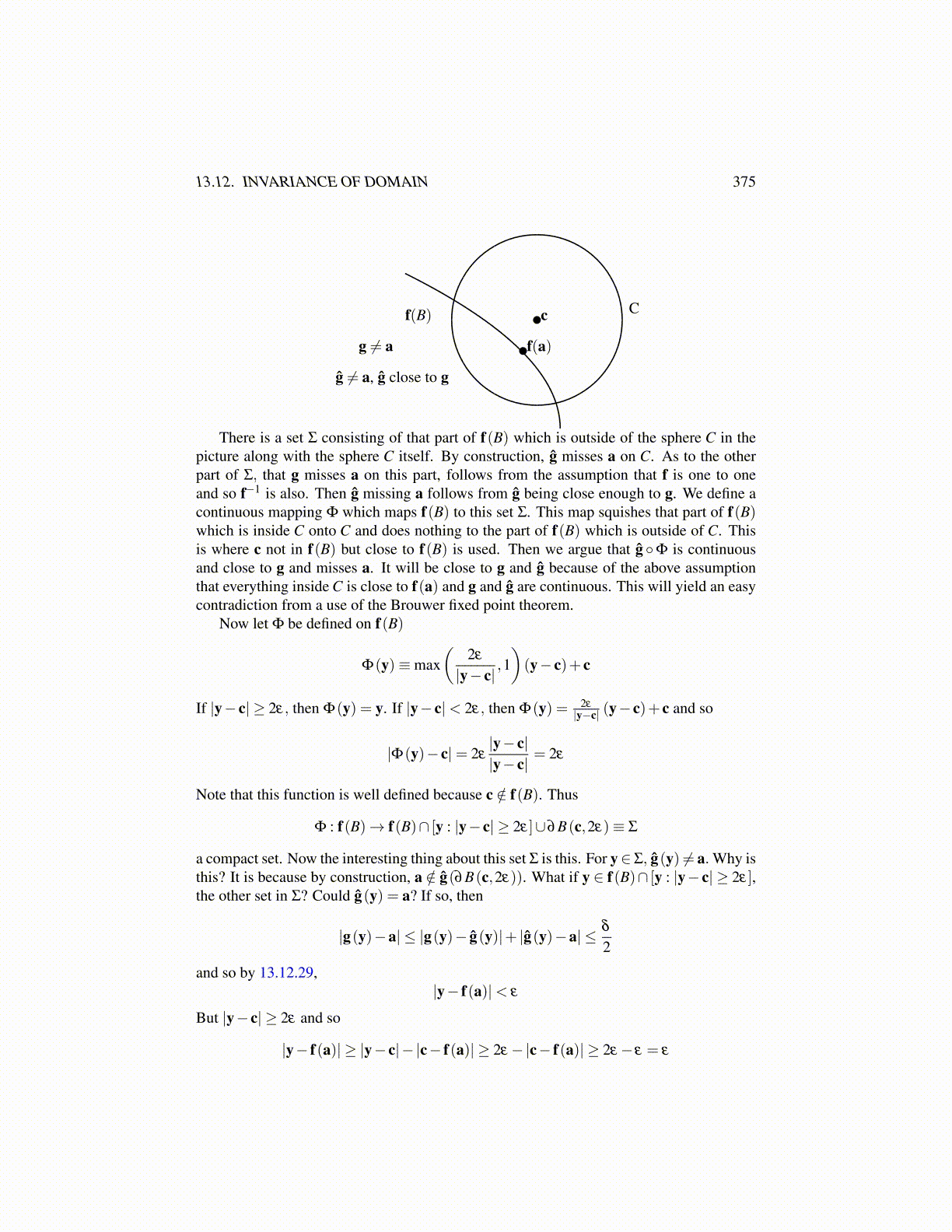
13.12. INVARIANCE OF DOMAIN 375
f(a)
cf(B)
g ̸= a
ĝ ̸= a, ĝ close to g
C
There is a set Σ consisting of that part of f(B) which is outside of the sphere C in thepicture along with the sphere C itself. By construction, ĝ misses a on C. As to the otherpart of Σ, that g misses a on this part, follows from the assumption that f is one to oneand so f−1 is also. Then ĝ missing a follows from ĝ being close enough to g. We define acontinuous mapping Φ which maps f(B) to this set Σ. This map squishes that part of f(B)which is inside C onto C and does nothing to the part of f(B) which is outside of C. Thisis where c not in f(B) but close to f(B) is used. Then we argue that ĝ ◦Φ is continuousand close to g and misses a. It will be close to g and ĝ because of the above assumptionthat everything inside C is close to f(a) and g and ĝ are continuous. This will yield an easycontradiction from a use of the Brouwer fixed point theorem.
Now let Φ be defined on f(B)
Φ(y)≡max(
2ε
|y− c|,1)(y− c)+ c
If |y− c| ≥ 2ε, then Φ(y) = y. If |y− c|< 2ε, then Φ(y) = 2ε
|y−c| (y− c)+ c and so
|Φ(y)− c|= 2ε|y− c||y− c|
= 2ε
Note that this function is well defined because c /∈ f(B). Thus
Φ : f(B)→ f(B)∩ [y : |y− c| ≥ 2ε]∪∂B(c,2ε)≡ Σ
a compact set. Now the interesting thing about this set Σ is this. For y∈Σ, ĝ(y) ̸= a. Why isthis? It is because by construction, a /∈ ĝ(∂B(c,2ε)). What if y ∈ f(B)∩ [y : |y− c| ≥ 2ε],the other set in Σ? Could ĝ(y) = a? If so, then
|g(y)−a| ≤ |g(y)− ĝ(y)|+ |ĝ(y)−a| ≤ δ
2
and so by 13.12.29,|y− f(a)|< ε
But |y− c| ≥ 2ε and so
|y− f(a)| ≥ |y− c|− |c− f(a)| ≥ 2ε−|c− f(a)| ≥ 2ε− ε = ε